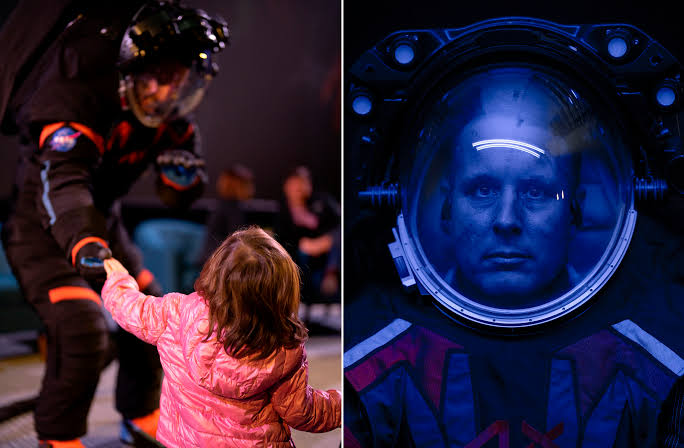On March 15, NASA and Axiom Space unveiled their first prototype of the new spacesuit for the planned Artemis mission, marking an exciting new chapter in the history of space travel.
As the new spacesuits will be worn by the Artemis generation of lunar astronauts, this significant occasion represents the following step towards a return to the moon.
The Spacesuit Axemy:
The “AxEMY Next Generation,” a cutting-edge spacesuit created in partnership by NASA and Axiom Space, will be used by the Artemis generation of lunar astronauts.
As they set out on the historic mission to conduct the first lunar surface landing since 1972, the astronauts wearing this suit are intended to have the maximum amount of support and protection.

Related: NASA Reveals Brand New Spacesuit For Artemis III Moon Mission
The Design:
Although the new AxEMY Next Generation spacesuit has a number of amazing features, like improved joints and boots made for walking on the south pole of the moon, it is the suit’s unique appearance that has drawn the most attention.
The suit is sleek and dark black with trendy orange and blue stripes; it is reminiscent of sci-fi movies, future video game outfits, and SpaceX’s Starship.

The Colours Used And Why Astronauts Can’t Wear Black On The Moon:
Despite its eye-catching look, the AxEMY Next Generation spacesuit won’t be used on the Moon. Like the spacesuits used by the Apollo astronauts before them, the suit used on the surface of the moon will be white.
The practical explanation for this is that reflecting and well-insulated materials are necessary to keep astronauts cool in the harsh climate of the Moon, where there is no atmosphere to protect them from the Sun’s radiation.
The astronaut’s body absorbs less heat thanks to the white colour’s ability to reflect sunlight, and the insulation in the suit helps the wearer stay at a suitable temperature. The AxEMY Next Generation spacesuit will contribute to the success and security of the future Artemis mission by making these sensible design decisions.
Related: What is NASA’s Artemis III mission in 2024?
Conclusion:
It is obvious that realistic design strategies will be essential to assuring the safety and success of these missions as we look to the future of human space exploration. To keep astronauts safe and comfortable in the harsh environment of space, spacesuits must be constructed with a multitude of variables in consideration, including temperature regulation and radiation protection.
Space agencies and their partners can assist pave the way for the subsequent generation of space exploration by adding practical factors like reflective white colours and effective insulation. We keep pushing the limits of what is practical and deepening our understanding of the cosmos around us with every new mission.
